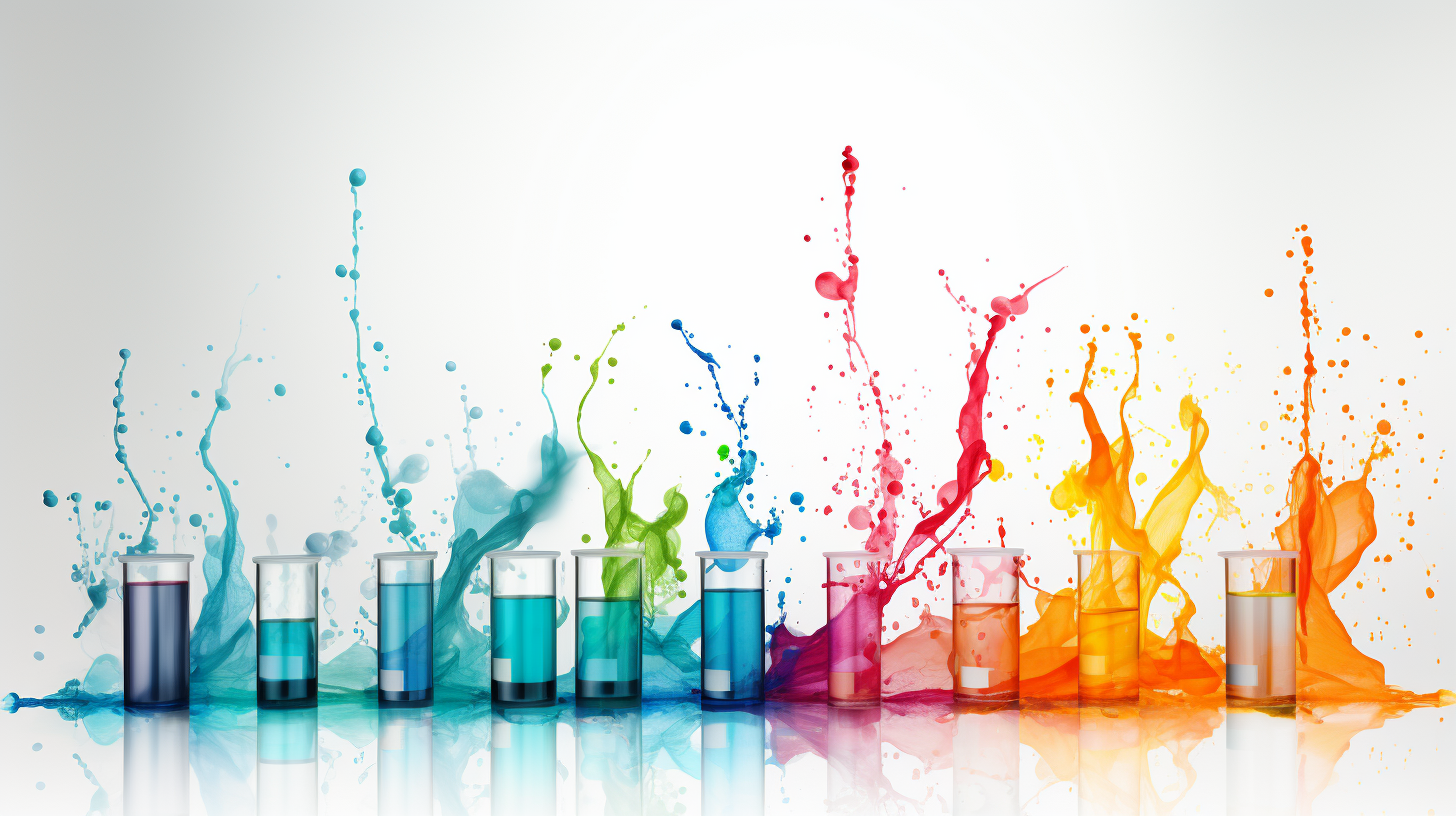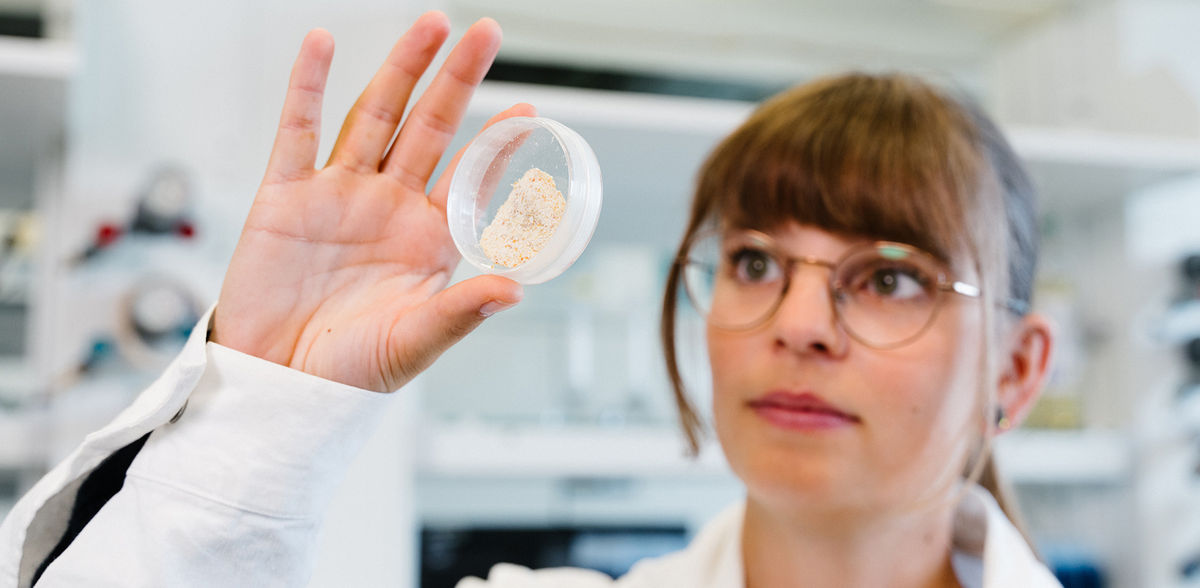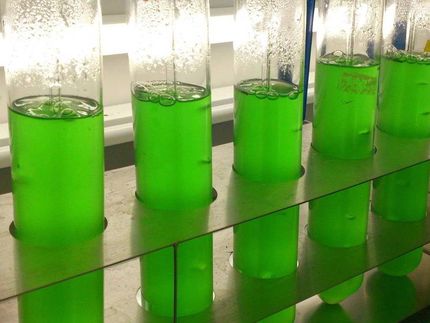Blue-green algae sugar instead of glyphosate
Cooperation project develops environmentally friendly glyphosate alternative
Advertisement
glyphosate reliably destroys unwanted plants, is used worldwide - and has been highly controversial for years due to its negative effects on the environment and health. For a long time, there was talk of banning the herbicide in Germany and possibly even throughout the EU. Fortunately, a better alternative is now in sight: doctoral students at HSBI are working on an environmentally friendly herbicide based on a natural sugar from blue-green algae in a BMBF-funded cooperation project with the University of Tübingen. The interim results are very promising.
The centrifuge tubes are neatly labeled and lined up in their holders in the Laboratory for Biochemistry and Microbiology at Bielefeld University of Applied Sciences (HSBI). Celina Beermann slips on her white lab coat. She takes out one of the tubes, shakes it a few times in a routine manner and holds it up to the light to examine it: small transparent capsules swirl through a liquid. Beermann lets a few of them roll onto the palm of her hand. "Feels a bit like gummy bears."
The special sugar was only discovered at the University of Tübingen in 2019
Celina Beermann may be a food chemist, but you'd better not try her 'gummy bears': They contain 7-deoxy-sedoheptulose (7dSh) - a special sugar produced by blue-green algae, or more precisely, cyanobacteria. "7dSh has an herbicidal effect, which means it inhibits the growth of plants," explains Beermann. Sounds sober and unspectacular, but it means that 7dSh is a real alternative to glyphosate, the globally used weedkiller that is about to be banned due to its negative effects on the environment and health. And above all: 7dSh is an environmentally friendly alternative. "The sugar is of biological origin, biodegradable in nature and, according to previous tests, toxicologically harmless," explains Beermann. An ideal, sustainable active ingredient for use in agriculture.
How the active ingredient 7dSh can be turned into an applicable preparation is currently being researched in a joint project between HSBI and the University of Tübingen, where the special sugar was first discovered in 2019. One of HSBI's tasks in the project is to develop a so-called formulation. In this context, formulation simply means converting an active ingredient into a form that can be used in practice.
DB: Can the blue-green algae sugar keep weeds out of the track bed?
Deutsche Bahn is not entirely innocent in this collaboration: "Deutsche Bahn had organized a workshop to discuss alternatives to the use of glyphosate in the track bed," explains Prof. Dr. Anant Patel, Vice President for Research and Development at HSBI, who has been researching and publishing on natural pesticides for many years. As an expert in fermentation and the formulation of biological and chemical substances, Patel attended the workshop and pricked up his ears when researchers from Tübingen presented the active ingredient 7dSh, which is produced by cyanobacteria. Patel: "The effect and environmental properties were immediately convincing."
But how does the active ingredient get to where it is needed in sufficient quantities, on the plant or in the soil? This is where Patel was able to contribute his expertise: "The application is supported by the appropriate formulation, as granules or spray solution," explains Patel, adding with a wink: "Some also say that the formulation makes the application possible in the first place." It quickly became clear that the expertise in Tübingen and Bielefeld complemented each other perfectly when it came to developing 7dSh into a market-ready and competitive product. A joint project was a done deal, and the Federal Ministry of Education and Research (BMBF) gave its blessing and the necessary financial support. "The project fills the gap between basic research and application," says Patel, categorizing the research contribution.
Samples are sent back and forth between Bielefeld and Tübingen
At the University of Tübingen, the exact mechanism of action of 7dSh is now being clarified, the eco-toxicological effects measured in comparison to glyphosate and 7dSh-tolerant varieties developed. "After all, the crops should continue to grow," says Celina Beermann. As a doctoral student in Prof. Patel's working group, she herself is working on the optimal formulation, which includes a suitable carrier material. Beermann has tested various materials for the granules: "Of course, it is important that they are also of biological origin and degrade easily." The transparent capsules, for example, are made from renewable raw materials. Then it's on to the contents: "How much sugar can I get into a capsule like this and how quickly does it dissolve? The active ingredient should ideally be released continuously over a long period of time, because farmers can't apply the product every day," explains Beermann.
The 27-year-old opens a tall device, thin tubes become visible, a carrier full of injection vials, a measuring apparatus. Using HPLC - which stands for High Pressure/Performance Liquid Chromotography - she can measure the concentration of the active ingredient in the liquid. If Beermann is satisfied with the result, she sends the relevant samples to Tübingen. "There, the formulation is tested on the plants. Because what works well in the laboratory can behave very differently in practice."
How can the environmentally friendly herbicide be produced on a large scale?
This also applies to the scale. While the amount of sugar for laboratory use is still easy to finance, it would still be too expensive for use in the field. This is where the Bielefeld part of Xenia Steurer's project comes in. The biotechnologist is effectively taking over the job of the blue-green algae and is working on the production of 7dSh in the bioreactor: "It must be possible to produce the active ingredient economically and in large quantities if it is to be used in practice." The prospect of actual later application is exactly what drives the doctoral student: "It is important to me that my research can contribute to environmental protection and that the active ingredient is eventually sold by a company as a sustainable herbicide." Beermann agrees: "The application aspect is particularly appealing about our research."
And they are on the right track. The constant exchange within the project group and the interlinking of the various sub-projects has led to promising interim results. Xenia Steurer has already been able to increase the production volume beyond expectations, and Celina Beermann's formulations are controlling the effect better and better. The Bielefeld-Tübingen research has also attracted the attention of experts: Xenia Steurer recently received an award for her presentation at an international environmental symposium for biotechnology and engineering. Both doctoral students have already taken the opportunity to present their results at international conferences, for example at the conferences of the Society for Chemical Engineering and Biotechnology Dechema in Aachen, Berlin and Granada, at the German Plant Protection Conference in Göttingen and the German Food Chemists' Conference in Hamburg. The next step leads to industry. Anant Patel: "There is great interest from companies and a collaboration is planned once the project has been successfully completed."
Note: This article has been translated using a computer system without human intervention. LUMITOS offers these automatic translations to present a wider range of current news. Since this article has been translated with automatic translation, it is possible that it contains errors in vocabulary, syntax or grammar. The original article in German can be found here.
Other news from the department science
Most read news
More news from our other portals
See the theme worlds for related content
Topic world HPLC
HPLC is a key technology in modern analytical chemistry. It enables the separation, identification and quantification of components in complex mixtures with high precision and efficiency. Whether in the analysis of active pharmaceutical ingredients, the quality control of foodstuffs or the examination of biological samples - HPLC is often the method of choice for demanding separation tasks.

Topic world HPLC
HPLC is a key technology in modern analytical chemistry. It enables the separation, identification and quantification of components in complex mixtures with high precision and efficiency. Whether in the analysis of active pharmaceutical ingredients, the quality control of foodstuffs or the examination of biological samples - HPLC is often the method of choice for demanding separation tasks.

























































